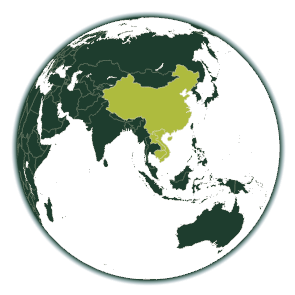Ailanthus altissima
Tree of Heaven
The Tree of Heaven (Ailanthus altissima) is a fast-growing deciduous tree native to East Asia and now found in many parts of the world. It typically reaches a height of 15-25 metres, but can grow even higher in favourable conditions. The tree is characterised by its great adaptability to different environments and is able to thrive even on adverse sites. The leaves are pinnate and consist of several pairs of glossy, green leaflets. In summer, the Tree of Heaven develops dense inflorescences with small, greenish flowers. The fruits are flat, papery seeds that are dispersed by the wind. Ailanthus altissima is considered very resilient and therefore difficult to control. Its presence can have a negative impact on native vegetation by suppressing it and enriching the soil with nitrogen.
Types of damage
Region of origin
China, South East Asia

Introduction vectors
Current distribution
Based on the FlorKart Database of the Federal Agency for Nature Conservation, as of 2013
Miscellaneous
Dispersion forecast
Indicates the proportion of land suitable for habitat under current and future climate conditions (2060-2080) under three emission scenarios (RCP26, RCP45 & RCP85).

Habitat suitability under current climate conditions
These habitat suitability maps show for Ailanthus altissima where suitable habitat conditions exist.
The map on the left shows this for current climate conditions. Below this are maps for the time classes 2040-2060 and 2061-2080, in which three different emission scenarios can be selected.
The slider at the top left allows you to adjust the opacity of the map to make orientation easier.
By clicking on the respective quadrant, information on the environmental conditions present in it can be called up.
The applied methodology is described here.















